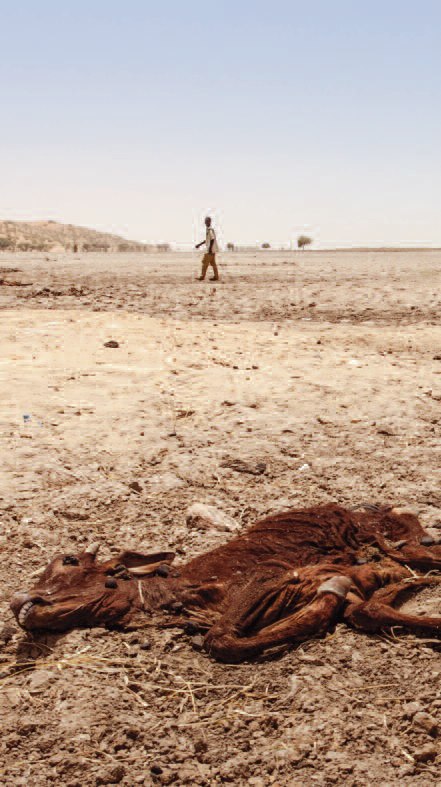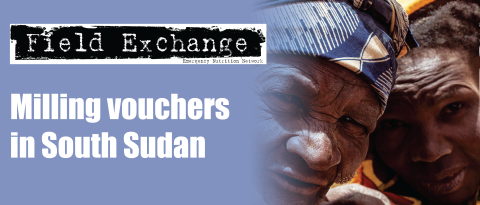Achieving resilience in different livelihood contexts
 Summary of report1
Summary of report1
Location: Africa and Asia
What we know already: Building resilience is widely referred to in Disaster Risk Reduction (DRR) and Climate Change Adaptation (CCA) strategies. Most DRR activities focus on reducing household vulnerability and increasing capacity to cope. Household diversification and increasing agricultural production are common approaches.
What this report adds: Household Economy Approach (HEA) data contributes to DRR by providing a vulnerability map that considers interactions between hazards, vulnerability and coping. Save the Children undertook preliminary analysis of HEA data from 300 distinct livelihood zones in 26 countries. Crop shocks had the most damaging effect on livelihoods in 233 livelihood zones. Livestock, purchase and labour shocks may also cause substantial damage. Rural communities are increasingly dependent on food purchase. The efficacy of diversifying livelihoods to increase resilience and reduce risk is questioned. Increasing income appears critical to reduce risk. Resilience programmes should conduct ‘pre-flight’ analysis on their interventions
A recent report published by Save the Children is one of a series of five reports and papers that aims to give critical insights into key questions about what resilience means and how to achieve it in different livelihood contexts.
The report presents evidence from a consolidated set of household economy data from more than 300 distinct livelihood zones in 26 countries: Botswana, Burkina Faso, Cambodia, Chad, Colombia, Djibouti, Ethiopia, Haiti, Indonesia, Côte d’Ivoire, Kenya, Lesotho, Liberia, Mali, Mauritania, Mozambique, Myanmar (Burma), Namibia, Niger, Nigeria, Pakistan, Rwanda, Senegal, Somalia, Uganda, and Zimbabwe. It attempts to answer key questions (operational and policy-related) about disaster risk reduction (DRR) and climate change adaptation (CCA) in a range of livelihood contexts:
- Which single shock has the most damaging impact on households’ ability to meet their minimum food and livelihood requirements?
- Does diversification always help reduce the risk of disaster?
- Will increasing poor households’ agricultural production increase their resilience in the face of climate change?
- What hazards are pastoralists most vulnerable to and what does resilience mean for a pastoralist economy?
The Household Economy Approach (HEA) database helps shed light on the risk of livelihood crises within the context of a shifting and dynamic set of natural and man-made hazards. If the goal of DRR is to reduce the risk of disasters (R), the overarching operational questions relate to how this can best be done. Actions can be directed at reducing the frequency and magnitude of different hazards (H) and/or towards reducing people’s vulnerability (V) to the hazards and/or increasing their capacity to cope (C). Most DRR activities today are aimed at achieving the latter because it is generally accepted that natural hazards are not – at least in the short term – amenable to human intervention. Building ‘resilience’, widely referred to in DRR and CCA circles, encompasses these last two components of the DRR formula (V and C). DRR is a unique field of work as it is based on a proposition of conditionality. If we can reduce vulnerability and increase people’s ability to cope, we will reduce the risk of disaster occurrences. But people are variably vulnerable to different hazards; rain fed-dependent farmers are highly vulnerable to drought, while poor urban dwellers are highly vulnerable to changes in food prices. Analysing the interaction between hazards and vulnerability and coping capacity in both current and future settings is what moves DRR beyond the static field of traditional emergency assessment and response into a dynamic arena of risk analysis and mitigation. The report authors argue that HEA’s unique ability to conduct dynamic scenario analysis is what makes it so appropriate for DRR related enquiries, supported by the limited analysis conducted for the report, and summarised here.
Contribution of HEA to DRR
An early warning and prospective disaster risk assessment system that is customised to pick up on the spatial variations in underlying livelihoods will be more accurate than one that is focused solely on hazards. HEA data contribute to the early warning and risk assessment component of DRR by providing a vulnerability map that is disaggregated to reflect areas where people are bound by a common vulnerability to the same hazards.
Crop shocks had the most damaging effect on livelihoods for the households in the 233 livelihood zones analysed. But livestock, purchase and labour shocks – far less commonly monitored throughout the world – can also cause substantial damage and, depending on the livelihood zone, can be far more critical than crops. Monitoring systems need to make a concerted effort to integrate mechanisms for systematically and effectively monitoring these critical shocks (in addition to crop production) if prospective disaster risk assessments hope to get things right. Across all livelihood zones, price shocks create a significant impact, second only to crop shocks. This reflects the high degree to which poorer rural households today are heavily reliant on purchasing their food. In an increasingly globalised world, price shocks reduce food access for both urban and rural households, which are increasingly tied to global markets. Given the fundamental connections between the two primary production systems (crop and livestock) and household sources of food and cash income – as well as the economic arrangements linking poor and better-off households – it is not clear what a realistic picture of a truly diversified livelihood looks like in rural areas. With the exception of off-farm labour/employment and certain types of self-employment, few rural options offer protection from the primary production hazards.
Questions raised
Overall, the report raises questions about the efficacy of pursuing a strategy based on diversifying livelihoods to increase resilience and reduce risk. Increasing levels of income, as well as finding truly independent income sources within a diversifying rural economy, appear to be critical for reducing risk and building resilience. It is not clear that improving smallholder agriculture on its own provides significant protection against disaster risks, and it depends very much on what methods are used to increase production as to whether or not reduced disaster risks will be an associated benefit. Given that development investments intended to increase resilience can sometimes have the opposite effect, putting households at greater risk in the short term, it is essential for resilience programmes to conduct ‘pre-flight’ analysis on their interventions.
Existing information about pastoralist livelihoods needs to be taken into account when devising resilience programmes and policies for pastoralist areas. Of particular relevance are the critical nature of livestock and market hazards; the requirement for long herd-recovery periods after droughts; shared vulnerability among all wealth groups and the redistributive effects of pastoralist economies.
Footnotes
1 Save the Children and the Food Economy Group (2013). Livelihoods at the limit. Reducing the risk of adapting to climate change. Evidence from the consolidated Household Economy Analysis Database.


